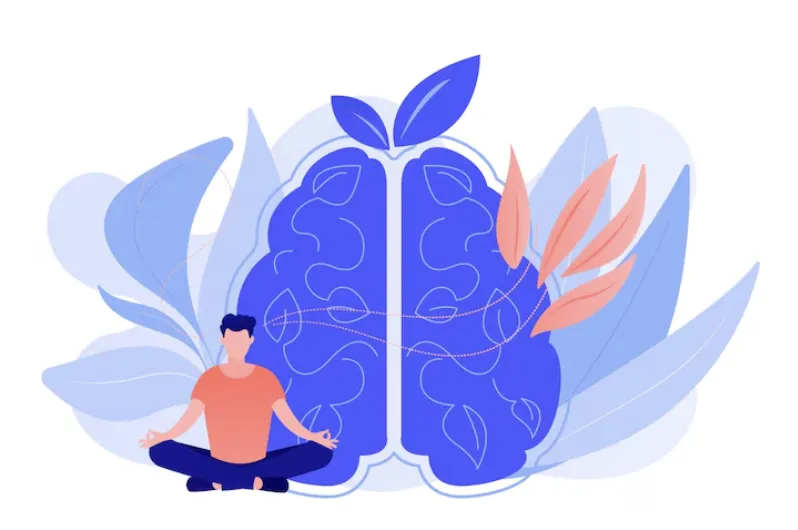Understanding Eating Disorders

Eating disorders are serious mental health conditions that involve persistent disturbances in eating behaviors and related thoughts or emotions. They can affect anyone regardless of age, gender, or background and often go beyond issues with food to reflect deeper emotional struggles. While eating disorders can have life-threatening physical consequences, recovery is possible with early intervention and proper support.
This article explores the causes, types, symptoms, and steps toward recovery for those dealing with eating disorders.
What Are Eating Disorders?
Eating disorders are psychological conditions characterized by unhealthy eating habits that may involve overeating, undereating, or obsessing over food, body weight, or shape. They can lead to severe emotional distress and physical health problems.
While societal pressures and body image concerns are commonly associated with eating disorders, they often stem from a complex interplay of psychological, biological, and environmental factors.
Types of Eating Disorders
There are several types of eating disorders, each with unique characteristics:
1. Anorexia Nervosa
- Symptoms: Extreme restriction of food, intense fear of gaining weight, and a distorted body image.
- Risks: Severe malnutrition, bone loss, heart issues, and even death if untreated.
- Signs: Rapid weight loss, excessive exercise, preoccupation with dieting, and denial of hunger.
2. Bulimia Nervosa
- Symptoms: Cycles of binge eating followed by purging behaviors, such as vomiting or excessive use of laxatives, to prevent weight gain.
- Risks: Electrolyte imbalances, gastrointestinal problems, and dental erosion.
- Signs: Frequent trips to the bathroom after meals, swollen cheeks, and evidence of binge eating (e.g., hidden food wrappers).
3. Binge Eating Disorder (BED)
- Symptoms: Recurrent episodes of consuming large amounts of food in a short period, often accompanied by feelings of shame or guilt. Unlike bulimia, purging does not follow binge episodes.
- Risks: Obesity, diabetes, heart disease, and psychological distress.
- Signs: Eating in secret, rapid eating, and feelings of lack of control over eating.
4. Avoidant/Restrictive Food Intake Disorder (ARFID)
- Symptoms: Avoidance or restriction of food intake due to lack of interest, sensory issues, or fear of choking or vomiting.
- Risks: Nutritional deficiencies, developmental delays (in children), and weight loss.
- Signs: Limited variety in the diet, lack of appetite, or significant weight loss.
5. Other Specified Feeding or Eating Disorders (OSFED)
- Symptoms: Atypical eating patterns that don’t fully align with the criteria of other eating disorders but still cause significant distress or impairment. Examples include night eating syndrome or purging disorder.
Causes of Eating Disorders
Eating disorders arise from a combination of factors, including:
1. Biological Factors
- Genetics: A family history of eating disorders or mental health conditions may increase susceptibility.
- Neurobiology: Irregularities in brain chemicals like serotonin may contribute to eating disorders.
2. Psychological Factors
- Perfectionism and low self-esteem.
- Anxiety, depression, or obsessive-compulsive tendencies.
- Difficulty coping with stress or trauma.
3. Environmental and Social Factors
- Societal pressure to conform to unrealistic beauty standards.
- Cultural emphasis on thinness or fitness.
- Bullying, peer pressure, or family dynamics related to food and body image.
Signs and Symptoms
While each disorder has unique symptoms, common warning signs include:
- Obsessive thoughts about food, weight, or body image.
- Changes in eating habits, such as skipping meals or bingeing.
- Avoidance of social situations involving food.
- Fluctuations in weight or noticeable weight changes.
- Physical symptoms like dizziness, fatigue, or gastrointestinal problems.
Physical and Emotional Consequences
Eating disorders can have severe consequences for both the body and mind:
- Physical: Nutritional deficiencies, weakened immune system, organ damage, and even death in severe cases.
- Emotional: Anxiety, depression, isolation, and difficulty maintaining relationships.
Steps Toward Recovery
Recovering from an eating disorder is a challenging but achievable process. Early intervention and a holistic approach are critical for success.
1. Seek Professional Help
- Medical Evaluation: A healthcare provider can assess physical health and the severity of the disorder.
- Mental Health Support: Psychologists or therapists specialize in treating eating disorders, often using evidence-based therapies like Cognitive Behavioral Therapy (CBT).
2. Build a Support System
- Share your struggles with trusted friends, family, or support groups.
- Surround yourself with individuals who promote body positivity and self-acceptance.
3. Focus on Nutrition
- Work with a registered dietitian to develop a balanced meal plan.
- Address fears or misconceptions about food in a supportive environment.
4. Practice Self-Compassion
- Challenge negative self-talk and cultivate a kinder inner dialogue.
- Engage in activities that promote relaxation and mindfulness, such as yoga or journaling.
5. Consider Medication
- In some cases, medications like antidepressants may help manage underlying mental health issues that contribute to eating disorders.
Preventing Eating Disorders
While not all eating disorders are preventable, fostering a positive relationship with food and body image can help reduce the risk:
- Encourage Balanced Eating: Avoid labeling foods as “good” or “bad.”
- Promote Body Positivity: Focus on health and well-being rather than appearance.
- Talk Openly: Discuss emotions and stressors rather than suppressing them.
- Be a Role Model: Display healthy eating and self-acceptance in your own behavior.





